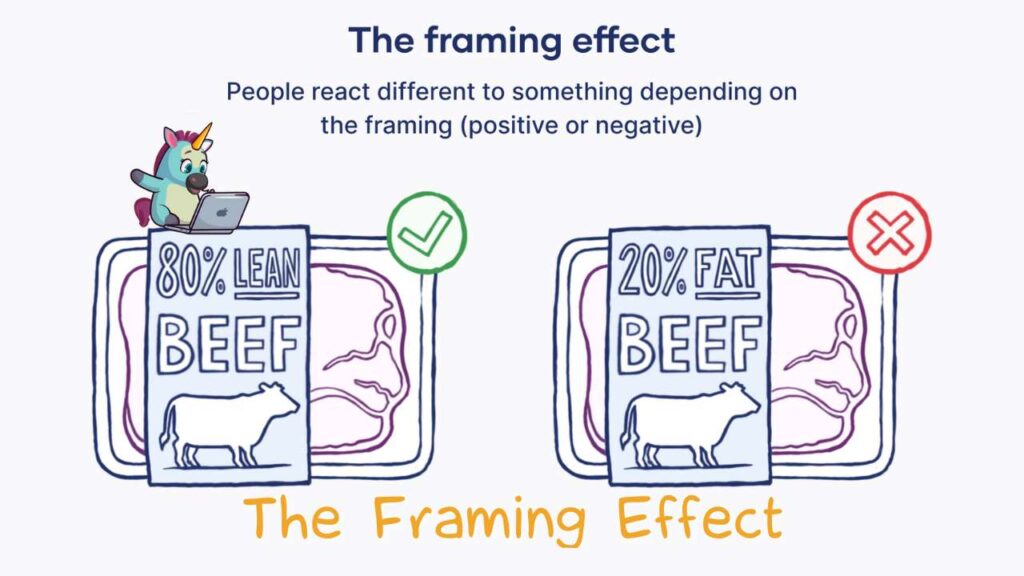
Imagine you’re considering two investment opportunities:
Option A: This portfolio has a 60% chance of gaining 20% in value and a 40% chance of losing 10%.
Option B: This portfolio has a 40% chance of maintaining its current value and a 60% chance of increasing by 20%.
Which one would you choose?
If you’re like most people, you probably gravitated towards Option B.
But here’s the crazy thing:
Both options have the same expected outcome!
Welcome to the fascinating world of the Framing Effect.
This cognitive bias suggests that how information is presented (or “framed”) can significantly influence our perception and decision-making.
In other words, the way a message is crafted and delivered can sway our opinions and choices, even when the underlying facts remain the same.
It’s like our brains are saying, “It’s not just what you say; it’s how you say it!“
🧠 The Psychology Behind the Frames
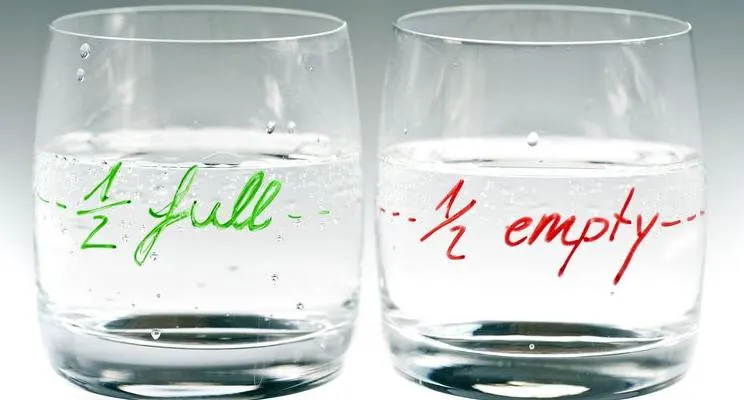
So, what’s the science behind the Framing Effect?
It all comes down to the way our brains process and interpret information.
When we encounter a message, our brains don’t just absorb the raw facts; they also take into account the context, the language used, and the implied meanings.
This cognitive filtering system allows us to quickly make sense of complex information by relying on mental shortcuts and emotional cues.
The Framing Effect takes advantage of this psychological quirk by presenting information in a way that highlights certain aspects, downplays others, and guides our attention towards a desired conclusion.
By carefully crafting the frame, marketers and communicators can influence how we perceive value, assess risk, and make decisions, often without us even realizing it.
🪄 Framing Effect Spellbook
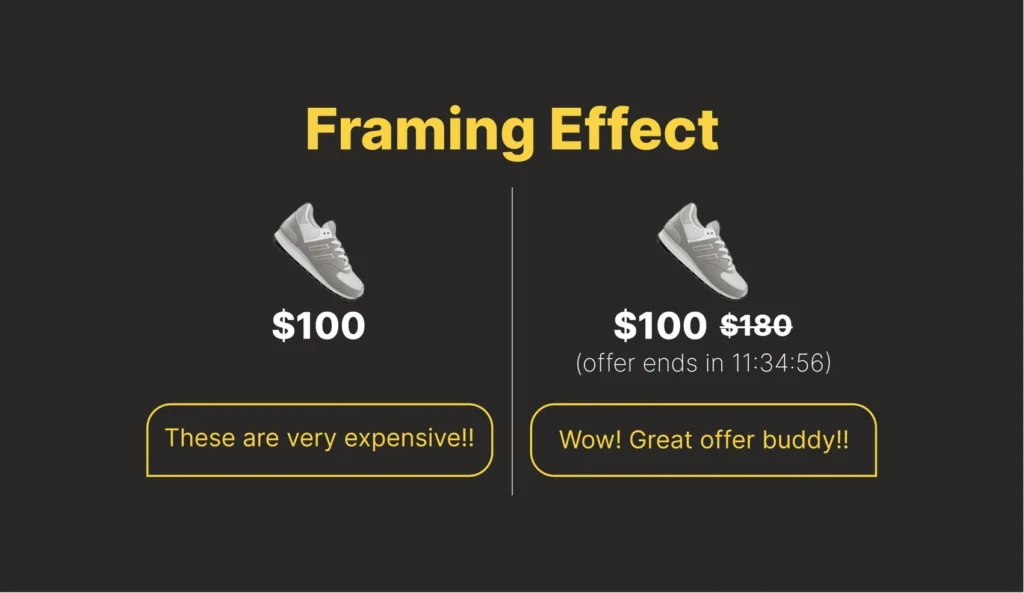
Ready to cast some Framing Effect spells for your brand?
Here’s how you can use this psychological principle to shape your messaging and influence your customers’ choices:
Start by understanding your audience’s values, beliefs, and pain points.
This will help you craft frames that resonate with their worldview and tap into their emotions.
When presenting options, emphasize the potential gains or benefits rather than the risks or drawbacks.
This “gain frame” can make your offering seem more appealing and encourage customers to take action.
Use vivid, concrete language and imagery to make your message more memorable and persuasive.
Paint a picture of the desired outcome and help customers envision themselves enjoying the benefits.
Frame your pricing and promotions in a way that highlights the value and savings, rather than the cost.
For example, “50% off” sounds more enticing than “pay half the price.”
Finally, test different frames and monitor the results.
Use A/B testing, surveys, and analytics to see which messages resonate best with your audience and refine your approach over time.
🌟 Framing Effect Hall of Fame
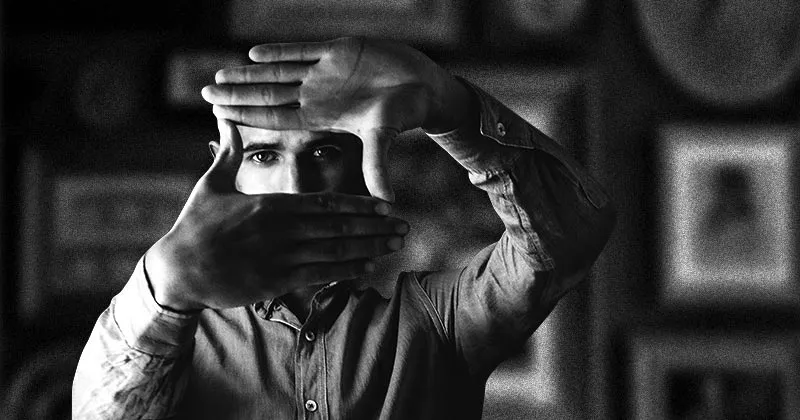
Need some inspiration for your own Framing Effect feats?
These brands have mastered the art of shaping perceptions and guiding decisions:
Slack Framing Effect
– Slack, the popular team collaboration platform, frames its product as a productivity booster and a communication simplifier. By emphasizing the benefits of streamlined workflows and reduced email clutter, Slack convinces teams to adopt its tool and leave behind traditional messaging apps.
Apple Framing Effect
– Apple is a master of framing its products as innovative, user-friendly, and stylish. By focusing on the sleek design, intuitive interface, and “it just works” philosophy, Apple convinces customers to pay a premium for its devices and ecosystem.
Salesforce Framing Effect
– Salesforce, the leading CRM platform, frames its solution as a growth accelerator and customer relationship enhancer. By highlighting the benefits of centralized data, automated workflows, and AI-powered insights, Salesforce persuades businesses to invest in its platform and unlock their full potential.
By studying these Framing Effect cases and the way they shape their narratives, you’ll find plenty of inspiration for crafting your own persuasive messaging.
So go ahead and start framing your brand’s story for success!

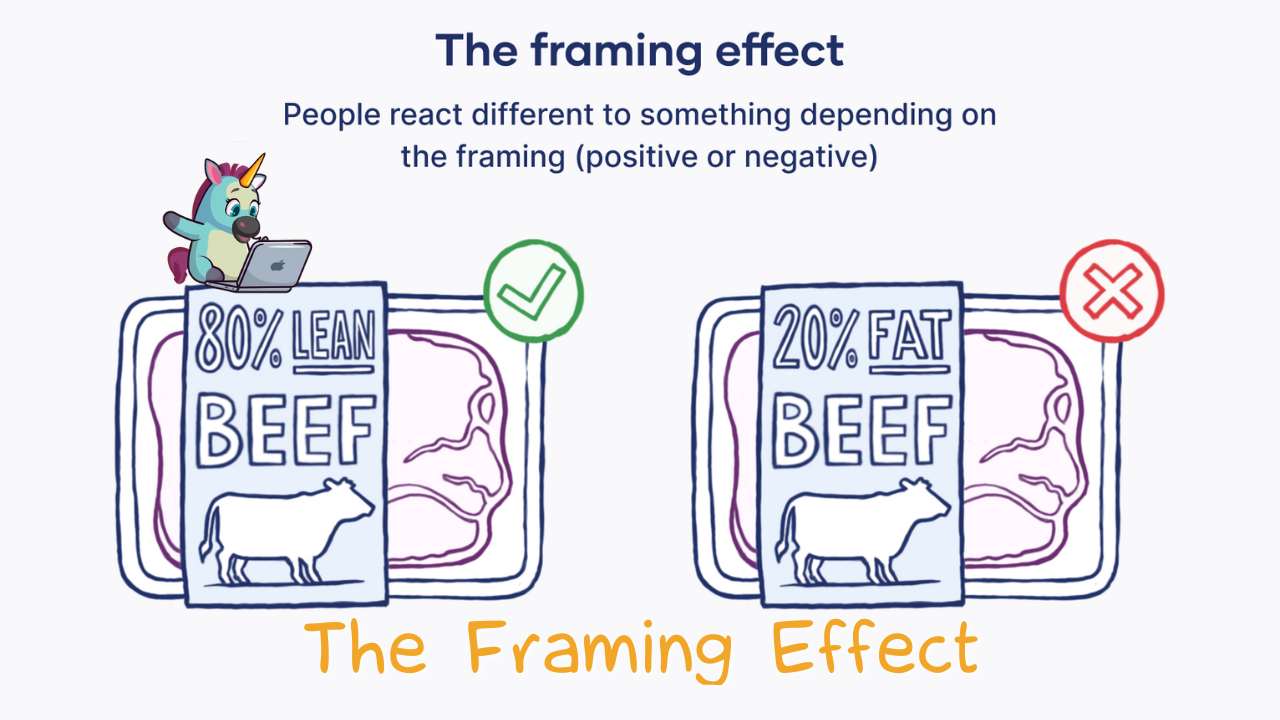
Leave a Reply